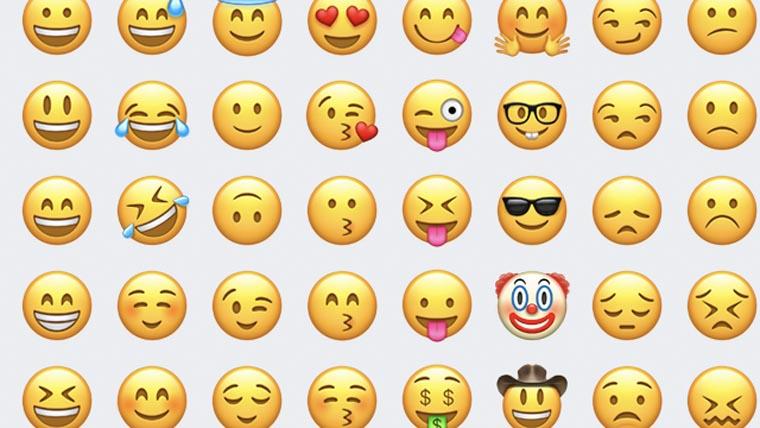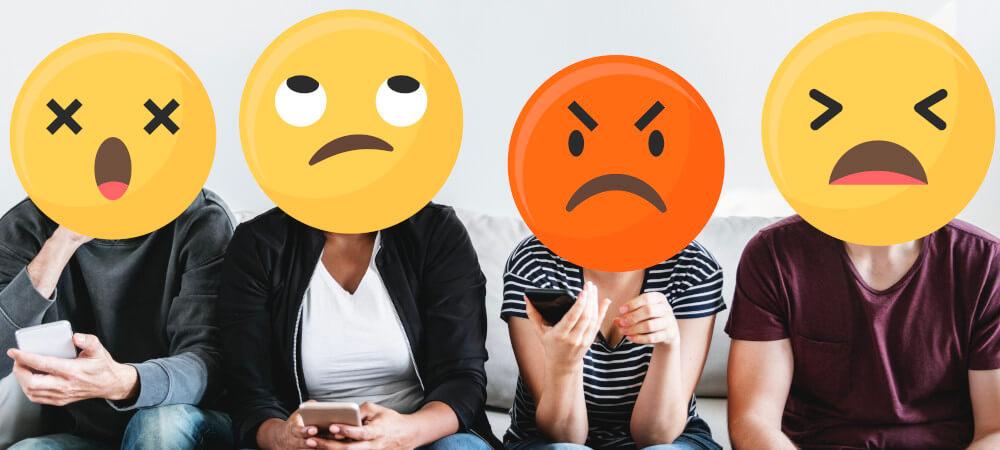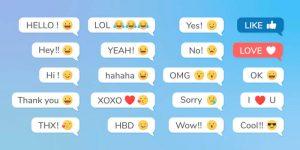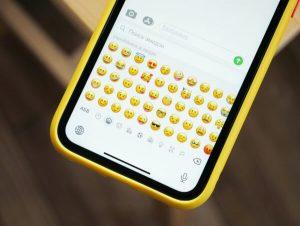
Smilies - history and meaning of smilies
Contents:
Probably, we will not find a person who has never used emoticons when using the Internet. Emoticons found a permanent place in digital communicationwhile significantly improving it. They can replace in writing what is usually displayed in body language or facial expressions. More than once emoticons they may be the only reaction to a statement... Most phones have their own table of emoticons or emojis, which themselves turn keyboard characters into a picture. Since emoticons occupy such an important place in the Internet space, it is worth knowing where they came from and what their meaning is.
What are smilies?

Emoticon in contractual graphic sign, mainly consisting of punctuation marks, thanks to which we can express your emotions in Internet communication and via SMS. Most emoticons, including the most popular “:-)” emoticon, can be read by rotating them 90 ° counterclockwise. Some, especially those taken from manga and anime like OO, are read horizontally. The word smiley comes from English words. emotion - emotion i badge - Icon... Today, the string of symbols denoting emoticons is being replaced more and more often. pictorial emoticonsalso showing activities or items.
Smiley history
Emoticons first appeared in 1981 in the satirical magazine Puck, where punctuation marks that were supposed to resemble human facial expressions were presented in a vertical perspective. This pattern was not widely adopted and was quickly forgotten. The emoticons that we use today and without which it is difficult to imagine the current communication appeared a year later. The world's most popular emoticon or emoticon has been sent 19 September 1982 at 11:43 by professor Scott Fahlman... Professor taught computer science at Carnegie Mellon University. communication with students via online chat.
The emoticon appeared in response to a rumor about the dangers of mercury spills in the university elevator. On the other hand, the rumor came about as a result of a chat controversy. One student threw this information up as a joke in response to a recent actual accident at the university. Most understood the sarcastic tone of the speech, but not all. Those who accepted this information truthfully circulated it as a warning to others.
Professor Fahlman saw the danger in spreading misinformation - in the future, students may not believe in a real threat. His idea was withemoticon emoticon application in humorous news and sad news in those that should be taken seriously. Emoticons were to be created using topographic signs and read from left to right. However, the original meaning of emoticons was quickly abandoned and began to be used as information. suggestive emotions accompanying the interlocutor.
What do smilies mean?
 In the modern world, where we are bombarded with information from all sides, emoticons not only improve, but also often replace communication... Above all, however, they add a human element to where we would otherwise see words. There is no room in short text messages to detail your feelings or emotions surrounding the question. Emoticons allow quick way to communicatewhether the information will be humorous, whether the interlocutor will be sad, cheerful or, perhaps, scared. Thanks to emoticons, we can broadcast messages correct tone i facilitate the interpretation of the interlocutor.
In the modern world, where we are bombarded with information from all sides, emoticons not only improve, but also often replace communication... Above all, however, they add a human element to where we would otherwise see words. There is no room in short text messages to detail your feelings or emotions surrounding the question. Emoticons allow quick way to communicatewhether the information will be humorous, whether the interlocutor will be sad, cheerful or, perhaps, scared. Thanks to emoticons, we can broadcast messages correct tone i facilitate the interpretation of the interlocutor.
Today's society is so strongly focused on emoticons that even their absence can signal something, for example, that the interlocutor is offended or not in a good mood. It is believed that people using emoticons are more relaxed and friendlier towards others. Their posts get more likes and are visible faster than posts without emoji.
However, emoticons do not mean the same everywhere, many of them, especially the less popular ones, are read differently depending on the cultural background of the interlocutor... It is worth remembering this when establishing online contacts with residents of the distant corners of the world.
Emoticons and emojis - how are they different?
Even though emoticons and emojis are used for the same purpose, they are not exactly the same! Moreover, even their names are not related to each other. smiley Is a character made up of only characters on the keyboard, intended primarily to reflect the feelings and reactions of the person writing a message, while emoji is a pictogram in Japanese. Emoji Are signs that help broaden the message by showing not only emotions, but also animals, places, weather and food. Emoji was created a few years after emoji came into use.
Emoji have won such recognition among people using digital communication that they even have their own 2017 animated film Emotes and World emoji day, celebrated July 17.
Should you use emoticons and emojis and where?

List of emojis on the phone
Smilies are for informal communication... So they can be clearly seen on Internet forums, in comments or private messages to relatives. Among the youth they communication standard and they are well understood, even in situations where two strangers are talking to each other. Emoticons are especially worth using in ironic messages that can be misunderstood without an icon. Emoticons act on the brain of Internet users like a real smile of others, and this, as you know, can improve mood.
Emoticons are the same as emoticons give a message an emotional flavor, enrich the exchange of information as if it were facial expressions in a live conversation. At the same time, they can also greatly shorten the message, which is welcome today. Emoticons also work well where we do not have a specific answer, but we do not want to leave the interlocutor only with the message "read", to which many Internet users are even allergic.
It is also worth using them for marketing purposes - companies that willingly use emoticons are considered contact and more authentic.
Using emoticons in official correspondence, however, is discouraged, especially in large quantities. E-mails to professors or employers should not contain such marks. You should also pay special attention to emoticons when talking with seniorthat may not understand them... Before sending an emoji message to your grandparents, make sure they know the meaning of the emoji and that the mobile phone they are using reads the emoji correctly.
Basic list of smilies and smilies
| smiley | Emoji | Sign |
| : ) | ?? | Buźka / Joyful emoticon. |
| : D | 😃 | Laughter |
| : ( | 🙁 | Sadness |
| : '( | 😢 | Cry |
| : ') | ???? | Tears of happiness |
| : | 😮 | Surprise |
| * | 😗 | Kiss |
| 😉 | 😉 | Blink |
| : P | ?? | Sticking out tongue |
| : | | ???? | Face without expression / stony face |
Y
j